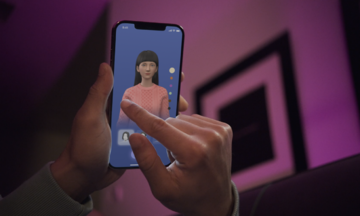Once everything is settled, Phi switches to an online meeting with her team at the fashion company where she works as a communications manager. After the meeting ends at 10 a.m., she reviews reports, handles emerging issues, and updates the team's plans.
In the early afternoon, Phi reads materials and develops marketing strategies for three businesses in different sectors. Before finishing her workday at 6 p.m., she researches international markets, planning to expand her co-founded women's fashion brand overseas.
These four full-time jobs earn the 26-year-old an average of 150 million VND per month.
 |
26-year-old Hoang Phi juggles four jobs, earning an average of 150 million VND monthly. Photo: Provided by the subject |
26-year-old Hoang Phi juggles four jobs, earning an average of 150 million VND monthly. Photo: Provided by the subject
A day in the life of 22-year-old Nguyet Anh in Hanoi is equally busy. In the morning, she works as a contributor for a media company. In the afternoon, she shifts to her role at an educational organization. Evenings are spent editing videos for clients. Alongside her final year at the Academy of Journalism and Communication, Nguyet Anh regularly shares her "multitasking journey" on TikTok, attracting hundreds of thousands of likes.
"Working multiple jobs helps me grow," she says.
Hoang Phi and Nguyet Anh represent the growing trend of poly working—holding multiple jobs simultaneously. Unlike freelancing or gig work, which often involve single projects or part-time commitments, poly working describes individuals who manage multiple full-time roles.
The poly working trend, prominent in many countries, entered Vietnam about two years ago and is most prevalent among young Gen Z workers.
According to a survey by Deloitte, nearly 50% of Gen Z workers hold two or more jobs concurrently, compared to 37% of Millennials. Another survey by Herbalife found that nearly 80% of Vietnamese respondents have at least one additional job.
Paychex, a global human resources consulting firm, reports that almost 60% of poly workers appreciate the model's flexibility, while 50% choose it for the freedom and good income. Over 30% see it as a tool to boost creativity.
Radhika Vivek, Senior Partner at Transearch, a global COO search and leadership advisory firm, told the Economic Times that poly working combines the commitments of a full-time position with the flexibility of freelance or part-time work. Instead of taking on just any freelance project, poly workers often have multiple jobs with similar levels of commitment.
 |
Nguyet Anh, a final-year student at the Academy of Journalism and Communication. Photo: Provided by the subject |
Nguyet Anh, a final-year student at the Academy of Journalism and Communication. Photo: Provided by the subject
Human resources expert Nguyen Thai Ha, CEO of John Hunt, believes this trend aligns with today's rapidly changing society. Gen Z doesn't want their entire lives revolving around a single work environment or culture like previous generations. They actively seek additional jobs for experience and self-development.
Poly working also diversifies income streams and increases autonomy in a competitive job market.
The Covid-19 pandemic, which initially boosted remote work, has further changed perceptions of careers. Those who experienced flexibility are now reluctant to return to traditional office settings, making poly working even more attractive.
Human resources expert Bui Doan Chung, founder and director of the Vietnam Human Resources Profession (NNS) organization, notes that alongside the benefits, workers must understand the complexities. Many Vietnamese businesses are wary of poly workers, fearing that juggling multiple roles can decrease work quality. The risk of information and data leaks from these employees is also significant.
Chung advises young people to have clear goals for each job to avoid becoming scattered. They should choose supplementary work that develops new skills, provides practical experience, or expands their network. Thorough research is crucial to avoid legal risks and scams.
Another downside of poly working is the challenge of time management, the risk of burnout, and potential conflicts of interest between jobs.
Hoang Phi learned this firsthand. Initially, fearing missed opportunities, she accepted almost every collaboration offer, leading to overload. Some days, she worked from morning till night fueled by only two cups of coffee. Overlapping meetings caused her to be late, miss crucial information, and even lose jobs.
Phi admits her current four jobs are the result of trial and error. They align with her strengths and allow her to manage her time and energy based on each task's complexity. She has achieved about 60% of her financial freedom goals before 35.
"I don't regret the hard work of my twenties for a more comfortable life after 35," Hoang Phi says.
Bui Huong












